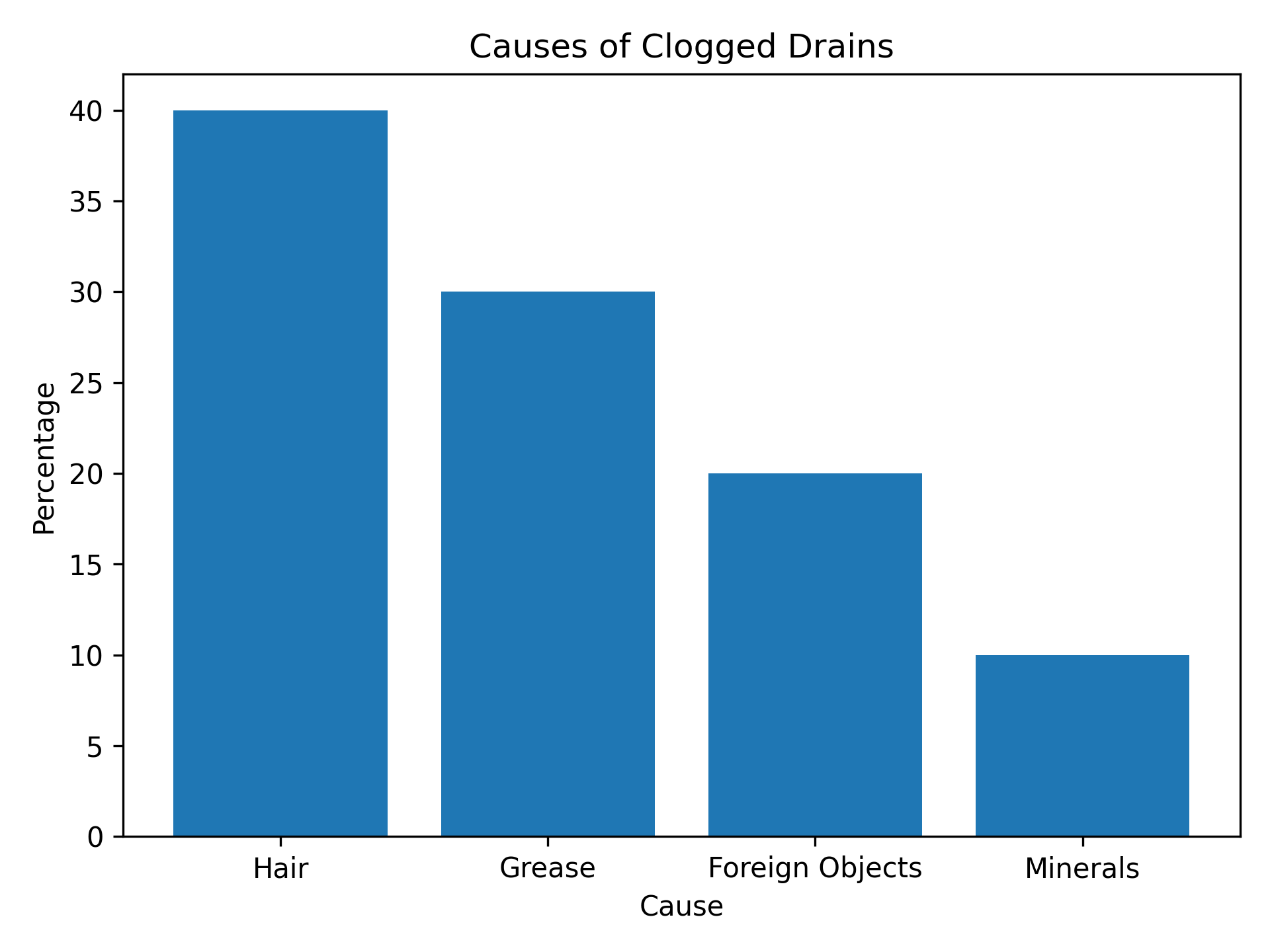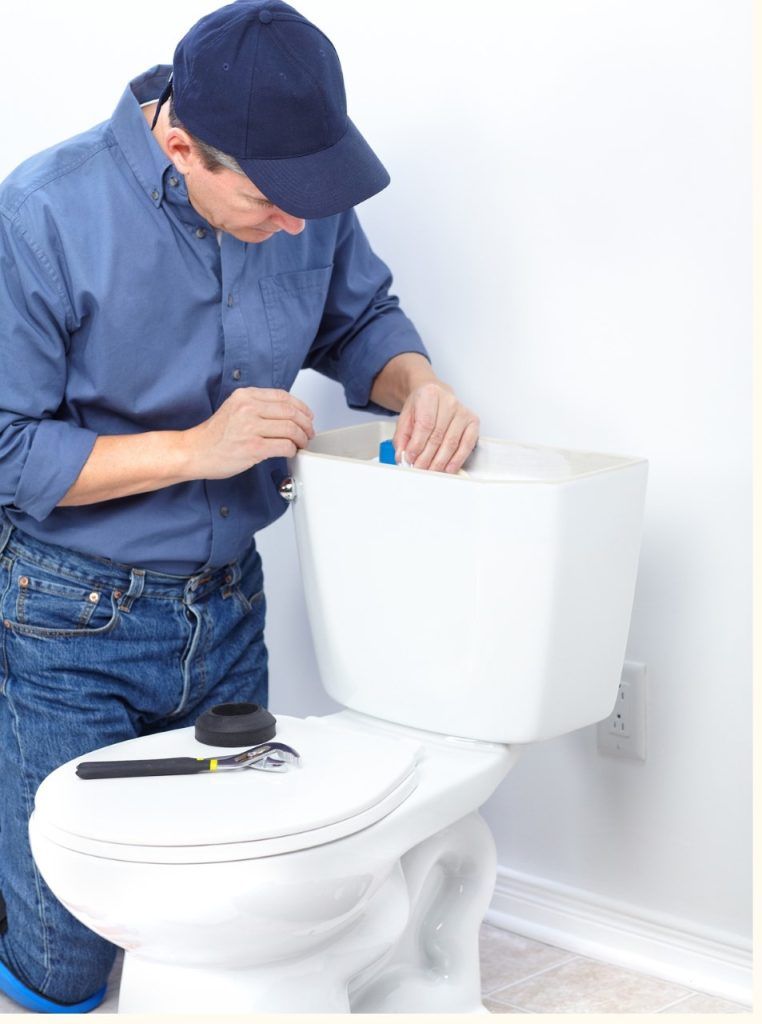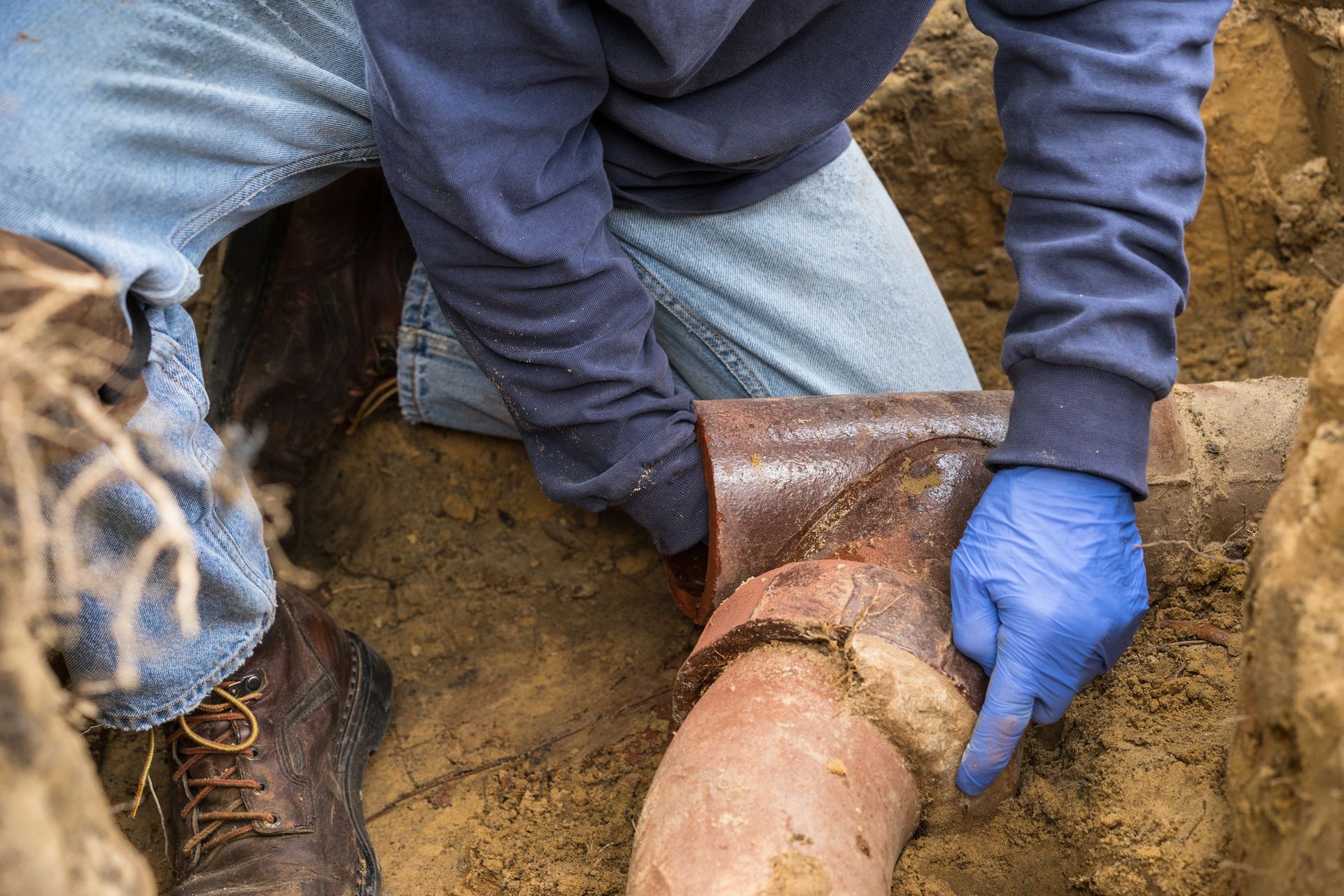SERVING ORANGE COUNTY & SURROUNDING AREAS
Need a Plumber? (323) 506-6622
Clogged drains are a nuisance that almost every homeowner has encountered at some point. From the kitchen sink to the bathroom drain, these obstructions can cause significant inconvenience and potentially lead to costly repairs if not addressed properly. This guide will provide you with comprehensive insights into understanding clogged drains, DIY cleaning methods, and professional services to ensure that your plumbing stays in top condition. By following the advice here, you'll be well-equipped to handle those stubborn clogs without breaking a sweat.
Understanding Clogged Drains
Understanding what causes clogged drains and how to identify them is crucial for effective cleaning. Here's a breakdown of the common factors:
Causes of Clogged Drains
The following bar graph illustrates the common causes of clogged drains, such as hair accumulation, grease buildup, foreign objects, and mineral buildup due to hard water:

Types of Clogs
- Kitchen Clogs: Often caused by food particles, grease, and soap scum.
- Bathroom Clogs: Commonly result from hair, toothpaste, and soap buildup.
- Outdoor Clogs: Leaves, roots, and debris can obstruct outdoor drains.
The Impact of Clogged Drains on Plumbing
Clogged drains don't merely cause slow draining; they can lead to a host of other problems.
Prevention of Clogged Drains
Preventing clogs is the first step in maintaining a healthy drainage system. Here are some practical ways to keep your drains clear and flowing smoothly:
Regular Maintenance Tips
- Clean Strainers Regularly: Remove food particles, hair, and other debris from sink strainers and drain covers.
- Use Drain Covers: Consider using drain covers to catch larger items that might cause clogs.
- Avoid Pouring Grease: Never pour fats or oils down the drain, as they can solidify and create blockages.
Items to Avoid Putting Down the Drain
- In the Kitchen: Grease, coffee grounds, eggshells, and large food particles.
- In the Bathroom: Hair, dental floss, cotton swabs, and sanitary products.
- General: Paint, chemicals, and any non-biodegradable items.
Useful Tools for Prevention
- Plunger: Regular use can help prevent minor clogs from becoming serious problems.
- Drain Guards: These can catch debris and prevent it from entering the drain.
- Environmentally Friendly Drain Cleaners: Regular use of these products can help maintain clear drains.
Professional Drain Cleaning Services
While DIY methods are often effective, some stubborn clogs require professional assistance. Here's what to know about professional drain cleaning services:
When to Call a Professional
- Persistent Clogs: If DIY methods have failed multiple times, it may be time to call a pro.
- Multiple Clogged Drains: If more than one drain is clogged, it could indicate a more serious problem.
- Strange Noises or Smells: Unusual sounds or odors coming from your drains may signal deeper issues.
What to Expect from Professional Services
- Inspection: Most professionals will start with an inspection to identify the problem.
- Specialized Tools: They will often use specialized equipment like hydro jets or motorized drain snakes.
- Guarantees: Many services offer guarantees on their work, ensuring the problem is fully resolved.
How to Choose a Reputable Service
- Check Reviews: Look for online reviews or ask friends and family for recommendations.
- Verify Licenses: Ensure the company is licensed and insured.
- Get Multiple Quotes: Don’t settle for the first quote; compare prices and services.
Conclusion
Clogged drains are a common but solvable problem. By understanding the causes, employing preventive measures, using effective DIY methods, and knowing when to call a professional, you can keep your drains flowing smoothly. This guide offers practical solutions for anyone facing a drain clog, whether a minor annoyance or a significant obstruction. Keep these tips handy, and never let a clogged drain ruin your day again! This is why professionals like B.LA.C Rooter Service, exist.
If you’re ever in need of emergency drain cleaning, sewer line repair, or any other residential plumbing service, put
our number on speed dial because we are your go-to!
OUR RECENT POST:


OUR SERVICES
QUICK LINKS
BUSINESS HOURS
- Monday
- Open 24 Hours
- Tuesday
- Open 24 Hours
- Wednesday
- Open 24 Hours
- Thursday
- Open 24 Hours
- Friday
- Open 24 Hours
- Saturday
- Closed
- Sunday
- Closed

